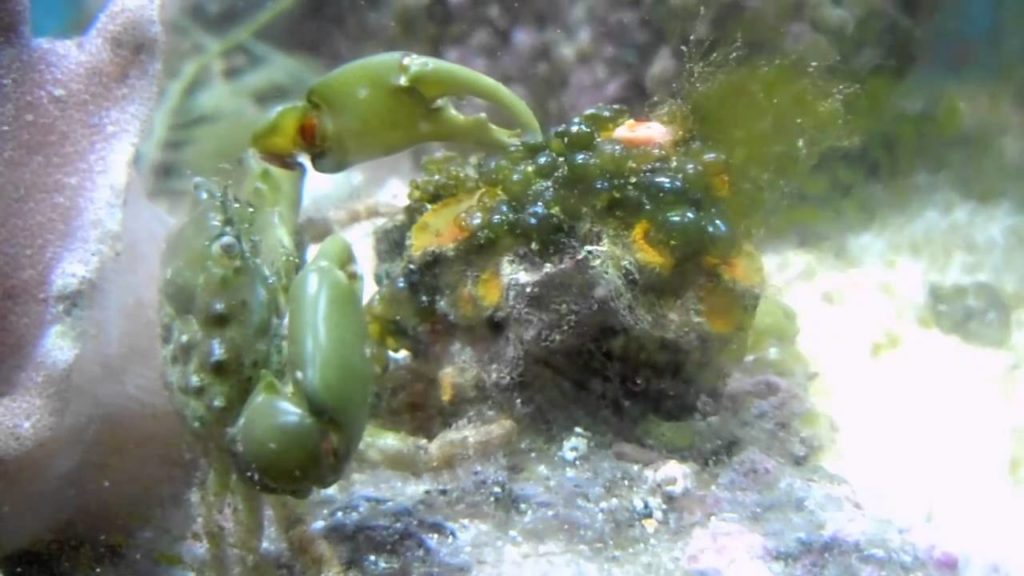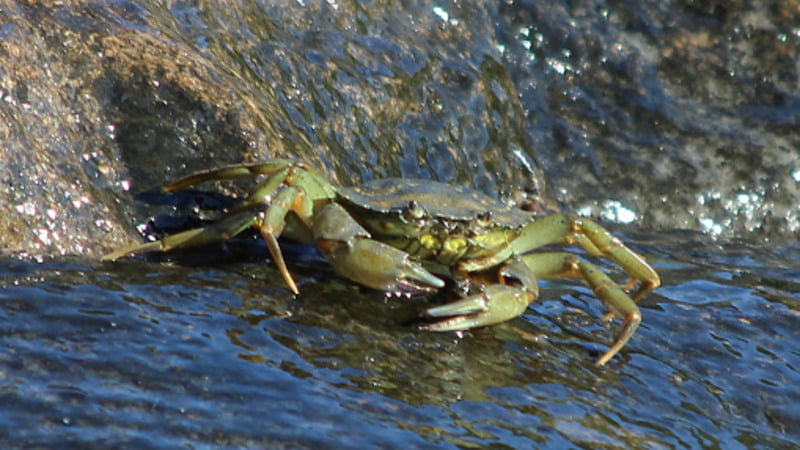It’s one of the most common questions in marine biology: do emerald crabs eat coral? Recently, there has been a lot of concern about this topic because there is evidence that when they do eat coral, it can cause a chain reaction that will eventually kill the entire reef.
However, these crabs are very picky and do not often consume enough to do any significant damage. In this blog post we explore why people should be concerned about these animals eating coral and what can be done to help stop them from doing so.
See also:
- What Is Emerald Crab Lifespan? How To Take Care Properly?
- What Is The Emerald Crab Max Size? Interesting Facts
- Top 5 Cute and Fun Facts About Saltwater Hermit Crab Eggs
Physical Traits Of Emerald Crabs
Emerald crabs are found in Caribbean and Gulf of Mexico reefs, where they live in large numbers. The name comes from the green color of the shell. Emerald crabs have a bumpy carapace, hairy legs, and relatively powerful claws even though their size is small. Their appearance resembles the bubble algae they supposedly consume in their little tank.
What Do Emerald Crabs Eat?

Crabs are scavengers and omnivorous. They will eat any leftover meaty food that you offer and clear the tank of bubble algae. However, you may want to consider a supplemental feed if you want to keep the “cohabitants” safe. If your emerald crab is new to your tank or it doesn’t have enough algae to eat, it may feed small fishes and coral inside the tank.
Beloved pet crabs can be fed finely chopped shrimp, dried seaweed, and dried nori. Nori is an absolute treat for emerald crabs and they will grub down on it as if their life depends on it.
Do Emerald Crabs Eat Coral?
The emerald crabs are a non-aggressive animals that will generally leave your coral reef alone. They might consume coral if there isn’t enough food to satisfy their need. Small fishes and invertebrates usually are the targets in this case.
The problem with emerald crabs is they are reef-safe, or at least most of the time that they spend in your aquarium. They will, though, eat one of the other animals if they cannot pass up an opportunistic meal if it presents itself.
FAQs
How many emerald crabs per tank?
They don’t usually get much bigger than 2.5 inches and one or two should be enough in a tank, but excess emerald crabs can prey on each other. So you should consider the size of the tank, the number of emerald crabs, and the amount of food you can provide frequently.
Are emerald crabs reef safe?
If you don’t provide these shellfishes with enough food, they will have to keep themselves from starving by eating the reef. So in shorts, emeralds crabs do eat coral, but only when they have to.
On the other hand, for many reasons, including climate change, coral reefs are dying around the world. But scientists say some crabs eat coral-choking seaweed and algae and may help with restoring coral reefs.
Do emerald crabs eat other fishes in the tank?
Since they are small in size, emerald crabs can be kept in basically any sized reef tank. Just be mindful that they may eat things like corals and other smaller fish, as well as being eaten themselves by bigger ones.
Some emerald crabs owners suggest that feeding emerald crabs frequently and intentionally will help prevent them from turning on living invertebrates or small fish. But it is wise to keep an eye on them nevertheless.
Conclusion: Keep An Eye On Your Emerald Crabs
Emerald crabs are very easy to feed since they basically consume almost everything you have to offer. Emerald crabs are chill if you can provide them with a suitable tank environment. But it is always smart to keep an eye on them because some may behave differently.
We hope that this post has answered your question “do emerald crabs eat coral?” Take care of them with our advice.

Annette M. Chaney is an experienced marine biologist with over 20 years of experience as an aquarist and fishkeeper. She started her first aquarium at a young age, filling it with frogs and goldfish obtained from the ten-cent pet store.
Annette grew up caring for and breeding African Cichlids, which led to a hobby in high school that doubled as a profitable means. Attending Reed College gave her time to solidify herself as an accomplished aquarium caretaker with an eye for sales. After that, from 2009 – 2013, she studied at Roger Williams University – one of the most prestigious universities for Aquaculture and Aquarium in USA. She is the founder of AquariumCircle since 2010.
